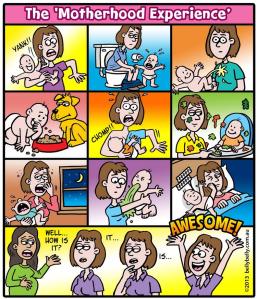So my newsfeeds have been equally flooded with notifications from two sides of the same coin – folks expressing outrage at Facebook’s audacity with the “old-wine-in-new-bottle” Internet.org/ free basics 100 crore campaign; and those who, believing truly in the “promised land of freedom” for poor, signing up the free basics petitions – I get the feeling half unknowingly.
A sample of some posts:
– Facebook has sneakily–without any announcement– launched its Internet.Org service across India, asking people to send an automated email to Telecom Regulatory Authority of India (TRAI), letting them know that you support ‘Free basics’.
– If you are free and have some time for a really funny activity – please do this –
1. Make a list of all your friends who are supporting Facebooks’s “free basics”
2. Now make a list of all your friends who are implicitly and explicitly Bhakts
3. Tell me the % overlap between the two lists
(it will also explain to you a concept called Statistical Correlation)
– Irritated to see so many notifications of friends on my timeline signing up the Free Basics petition to TRAI. Not quite sure how people fall in this trap for net neutrality without understanding the basics…Good job by Facebook in sugarcoating and re-packaging its agenda by renaming it as Free Basics… Jago Grahak Jago!
– I am getting notifications about FB friends, who have “Written” to TRAI supporting “Free Basics” (So called FB “charity” initiative to become the Gatekeeper for what is accessible on the internet).
I am wondering… are these friends really aware that “Free Basics” is just another name for their previous aborted attempt to do the same thing as “Internet.org”? Do these friends really support this sinister design of Zuck and gang? Do they realize that clicking on that button that FB so helpfully is pushing on their feed is not the same as clicking on the “Like” button? Do they realize that their names will be sent by FB to TRAI as “proof” that “many” Indians support FB’s attempt to limit the access of the poor to the internet?
(On a side note, this is also an experiment to check if FB has bots analyzing our comments on this issue to downgrade this post)
– Some of my friends have become victim of Facebook’s latest conspiracy. Please don’t write to TRAI without understanding the implications. Facebook is manipulating public opinion. please don’t get trapped into their advertising campaign and media management. I am against Free Basics.
https://www.linkedin.com/…/facebook-misleading-indians-its-…
– #freebasic is not a freebie for ppl being given by FB! It’s against #netNeutrality!!! Why else wd they spend so much on full page ads and hoardings! Use common sense, else read up before u sign petitions or then just abstain if u aren’t aware of the issues!
Else maybe then I am being harsh and you all who have signed up, have read the petition and truly agree with the fact that consumers shd not have freedom of choice and shd be docile and submissive and take whatever the Giants allow us to use!
– Do u support #freeBasics or do u support #netneutrality .. Pls think before you blindly support. If u have understood what you are supporting by signing the #freeBasic petition today then don’t complain about lack of Internet freedom Tomo!
– Hope all the bhakts wake up and realize that Zucky boy is running a business. Not a charity. Please read and for heaven’s sake, educate yourself before supporting Free Basics
The way #Facebook is behaving with #FreeBasics, slowly people will start telling “What the Zuck” instead of WTF! #SaveTheInternet
– M not an expert but lets ask those who don’t have internet access today are they worried about the corporate war behind Free Basics? Are they worried about whether FB gets benefit out of this or not? Or are they only concerned about whether they get the internet access no matter who (& how) they provide them. The debate has to be fair. Let’s not debate it like a first world problem (“net neutrality”.)
Media has been equally vociferous obviously, with opposition, defence, counter defence, allegation, counter allegation, doing repeated loops.
Most of you must have read Zuckerberg’s “op-editorial” in the TOI, arguing about the good that Free Basics brings. And then, this contra opinion by Nikhil Pahwa.
Probably the article(s) that got most coverage on the evil side of the coin were started by this one by Mahesh Murthy; and then facebook’s rebuttal to Murthy and his rebuttal, and then theirs….(just kidding, but this is a good summary of the to and fro :). The latest one by Nandan Nilekani and Viral Shah with a proposed solution; and another by Giridhar Pai have also been widely read.
Some nice spoofs emerged :
The funniest by far video is done by AIB : here it is for your viewing pleasure:
Most of those supporting the move, seem to be saying “something is better than nothing” for the majority (with many opinions arguing that this is the rich minority fighting about the poor majority’s issues!)
And most dissidents feel that Facebook is cleverly creating a walled garden, that there are no free lunches, that the telecom (Reliance) and Facebook will monetise all data in the future, that the move anyway is discriminatory (Pranesh Prakash, policy director at the Centre for Internet and Society, said, “Facebook, a foreign company, is allowed to campaign with impunity, but NGOs receiving funding from foreign trusts are subject to all manners of restrictions and may not campaign in India.”).
It’s interesting isn’t it, on the one hand there are universities and corporates working towards freeing up content (MIT-Open/ edX/ Coursera etc MOOCs), and then here is Facebook working towards restricting freedom in the garb of the opposite.
I think THAT’s my big problem – not so much the fact that they are creating a restricted walled garden, but they are doing it in a hole and corner fashion – with half truths/ part pictures and not full information.
Think about the petition many of my friends have signed –
“Meanwhile, To the Telecom Regulatory Authority of India, I support digital equality for India. Free Basics provides free access to essential internet services like communication, education, healthcare, employment, farming and more. It helps those who can’t afford to pay for data, or who need a little help getting started online. And it’s open to all people, developers and mobile operators. With 1 billion Indian people not yet connected, shutting down Free Basics would hurt our country’s most vulnerable people. I support Free Basics – and digital equality for India. Thank you.
To me, it is very very reminiscent of Dharmaraj Yudhishtira resulting in Guru Drona’s death in the epic Mahabharata, via a very famous half lie – “Ashwatthama hato hatah – narova kunjarovah”
But, I think what is worth pondering over, is that Ashwatthama, is purportedly one of the 7 “chiranjeevi” or “amar” i.e. ever living legends!
Do you think free basics in India will be unputdownable too? We have to wait and watch. (Good news – Egypt just said a no! to it)
























